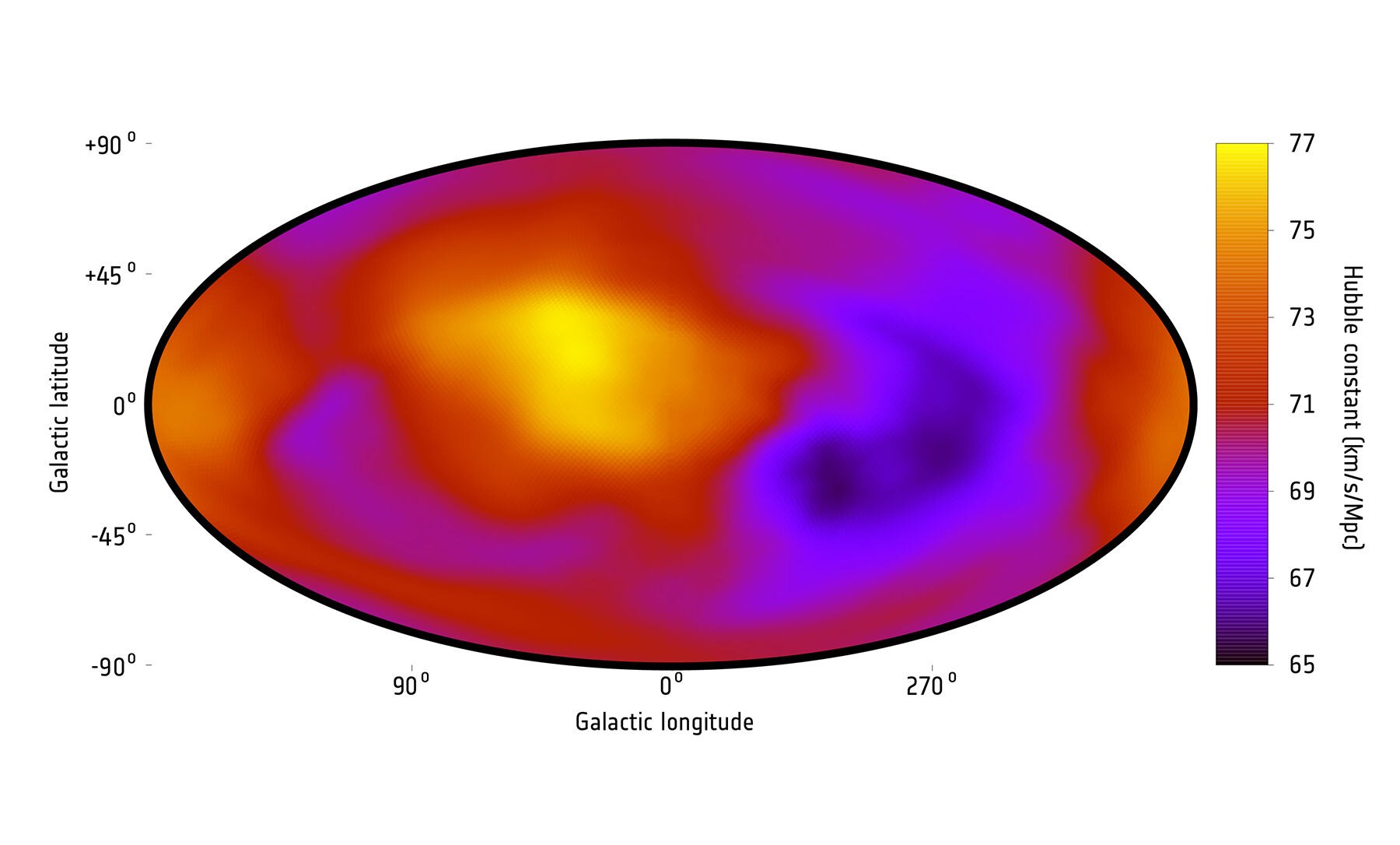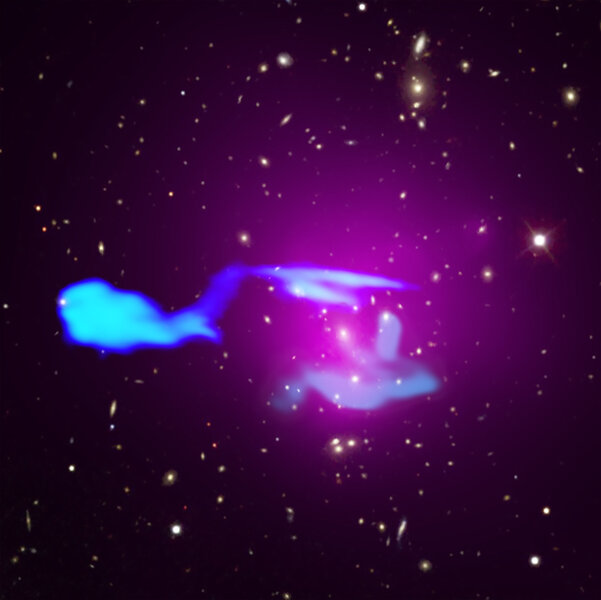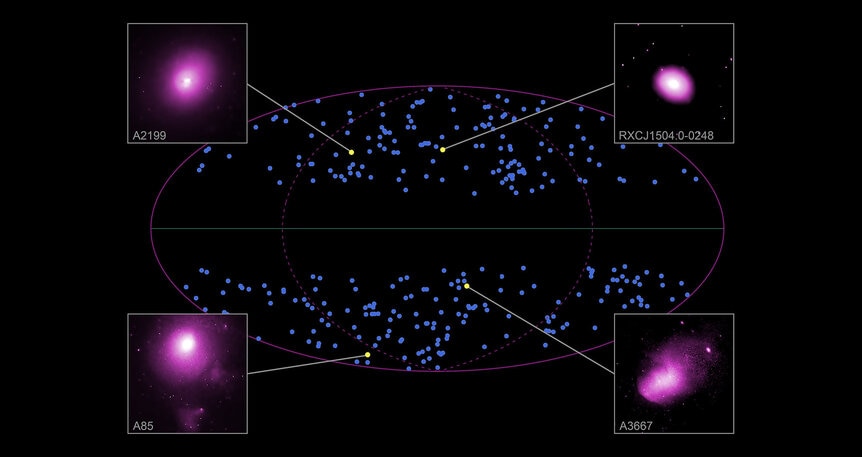Create a free profile to get unlimited access to exclusive videos, sweepstakes, and more!
Are some parts of the Universe expanding faster than others? Maaaaaaybe.

A new set of sweeping observations of distant clusters of galaxies has brought astronomers to an equally broad implication: It's possible — possible — that some of the basic assumptions we've been making about the way we see the Universe are wrong.
To be clear: This does not mean we're wrong about the Universe's expansion, the acceleration of that expansion, or anything like that. If the results are shown to be correct, then it means there are details in our understanding of the Universe's behavior that will need a more careful examination, and perhaps an update. Maybe a big one.
So the basic idea is that we think that on very large scales, the Universe is what we call isotropic: The same everywhere. So roughly the same density, temperature, and so on.
We've known for a century that the Universe is expanding. We've also assumed that expansion is the same everywhere; no matter where you look in the sky, you'll see stuff obeying the same rules of expansion as anywhere else.
This idea of an isotropic Universe is one of the most fundamental assumptions in cosmology (the study of the overall behavior and history of the Universe). And because it's so fundamental, some astronomers decided it would be a good idea to test it.
Mind you, that's good science! The assumption has a lot of evidence behind it, including the very earliest light we can see in the Universe, called the Cosmic Microwave Background. This light surrounds us in every directions, and you can think of it as the remaining glow of the Big Bang, cooled down to about 3 Kelvin (-270°C). This light is extremely smooth everywhere, the same brightness no matter where we look, down to one part in 100,000! This light is literally coming from all over the Universe, so it's a pretty good indicator that the Universe really is isotropic.
At least at great distances. That light is coming from over 13 billion light years away. Is it safe to say the Universe is isotropic on smaller scales?
That's what the astronomers wanted to test. To do this, they looked at galaxy clusters, gigantic gatherings of hundreds or even thousands of galaxies all orbiting each other. In between those galaxies is extremely hot gas, so hot it emits X-rays.
Here's where things get fun. By looking at the kinds of X-rays emitted, we can get the temperature of that gas. That temperature is intrinsic to the gas, and we don't have to assume a distance or anything to the cluster to measure it. Now, if we want to know the luminosity of that gas, the total amount of X-ray light it's emitting, then we do need to know the distance to the cluster. It's like seeing a distant light bulb; you can see how bright it looks to you, but you need to know how far away it is to know how much light it's actually emitting.
One way to get the cluster gas luminosity is to measure its distance by knowing how fast the Universe is expanding. Since the 1920s we've known the faster we see something moving away from us the farther away is. So if we can measure its apparent speed we can calculate its distance. We denote the speed of the expansion by a number named after Edwin Hubble: The Hubble constant.
So that's fine, but note that it depends on the redshift. If we're getting that wrong then our measurements will be wrong! Is there a way to get the luminosity of the gas without invoking it?
It turns out, yes. By looking at hundreds and hundreds of X-ray-emitting cluster gas all over the sky, astronomers have found a very tight correlation between luminosity and temperature. While this too depends on redshift, by looking at so many clusters all over the sky any problems with that will smooth out. The beauty of this is that you now have two ways to get the gas luminosity, one using redshift and one without. If the only difference is redshift, then you can solve the math to get the redshift, and see if, as we have assumed, it really is the same everywhere. Isotropic.
So that's what a team of astronomers did. They looked at over 300 clusters with the Chandra and XMM-Newton X-ray observatories, mapping the hot gas and getting the temperatures. What they found is astonishing: In one part of the sky it looks like the Hubble constant is higher, and in another part of the sky it looks like the Hubble constant is lower. They also used older observations of over 500 such clusters and got the same result!
As if the Hubble constant isn't so constant, and the change depends on where in the sky you look. That implies our assumption of isotropy isn't a good one. The Universe is anisotropic.
A result like this is so startling that they wanted to make sure nothing was tripping them up. They made a list of things that might affect their observations, might skew their results. For example, gas and dust outside our own galaxy might be blocking some X-rays from one part of the sky, making clusters look dimmer in that direction. They looked into this as best they could and found this to be unlikely. Not impossible, and well worth examining further, but in their opinion probably not the case.
Another possibility is that superclusters — the largest scale structures in the Universe, literally clusters of galaxy clusters, stretching for hundreds of millions of light years across the cosmos — might be messing things up. One or two of these in one direction might be pulling on clusters with their gravity, adding more velocity to them and screwing up the redshift calculations. They cannot discount that, and more observations are needed to see how big an effect they may be causing.
They looked at other things too and found nothing that was a showstopper. That doesn't mean they're right, but it does strongly imply something is going on. But what?
Well, that's not clear. It may be that there's just something they missed that's affecting their results, and the Universe really is isotropic. Or maybe they're right, and there's something about the Universe itself we're missing!
I don't know which way I'd bet just yet. The supercluster idea makes sense, and is very difficult to account for. On the other hand, there have been other observations using things like exploding stars and observations of individual galaxies which have been hinting at a problem with isotropy. Even more interesting, the directions in the sky of the anisotropies is consistent between these different methods! That's… eerie. Not convincing just yet, but enough for me to say, yeah, we need to look into this more.
I'm not ready to throw out cosmology yet. And even if true, it doesn't really change our most basic ideas. There was still a Big Bang, the Universe is still expanding, and that expansion rate is increasing every day due to dark energy. But the details of all these may change, and that's OK! After all, that's science. We have big, overarching ideas of how things work, and sometimes those are so well understood we call them laws. But what happens in detail, well, that can change over time as we get more and better observations.
As the authors themselves say, "The significance of cosmic isotropy for the standard cosmological paradigm is undisputed. Designing scrutinizing methods to test this hypothesis is vital since much new information about the Universe can be revealed through such tests."
What we have here is the first decent indicator we may have some details wrong. Maybe the indicator is wrong. Maybe our details are. We're just getting started here, so as time goes on we'll see. One thing I can guarantee is with a claim this big, a lot of astronomers will be jumping on it to see what's what.
So stay tuned. There will be more to this story, one way or another.

















